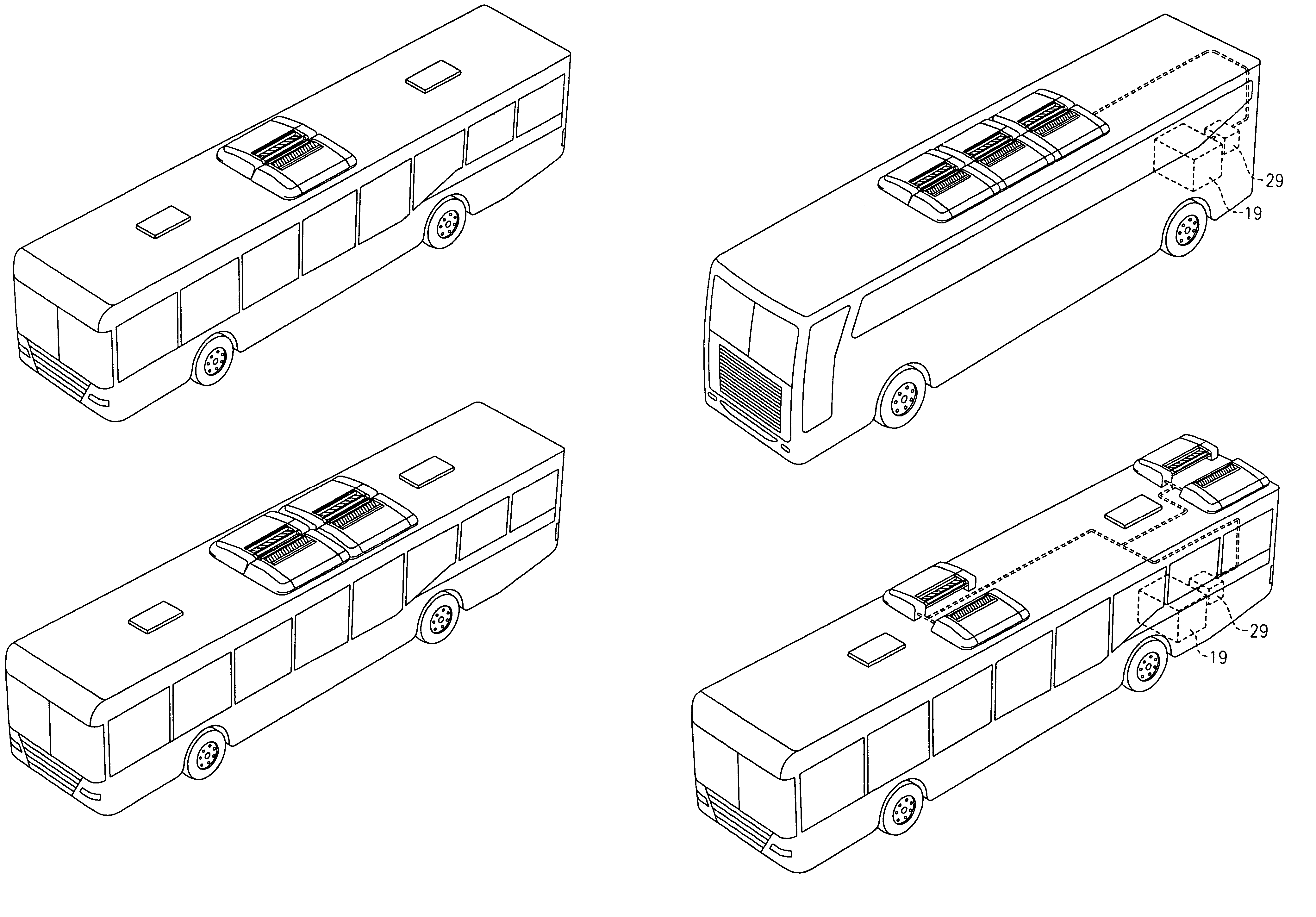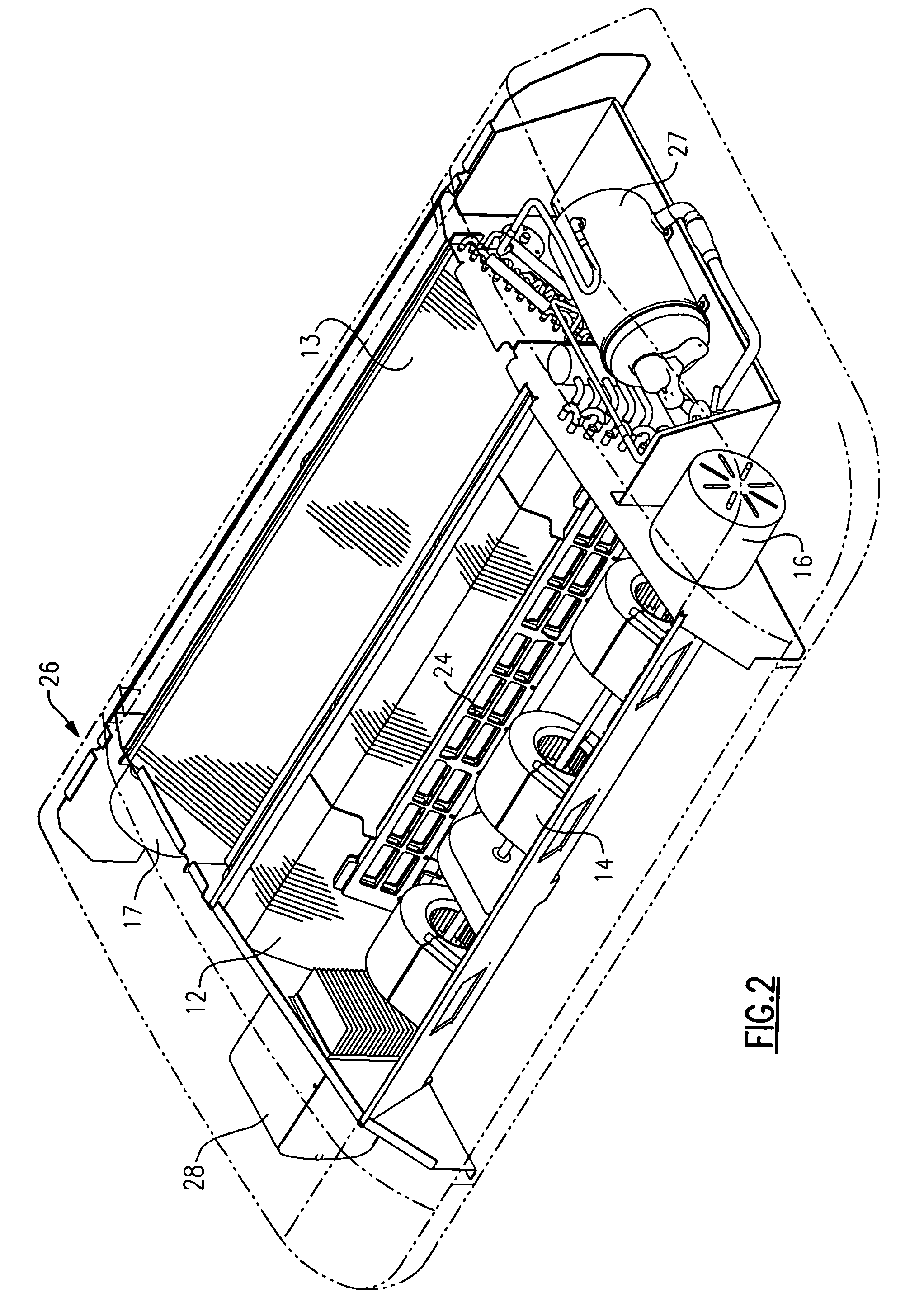Modular bus air conditioning system
a bus and air conditioning technology, applied in refrigeration machines, light and heating equipment, transportation and packaging, etc., can solve the problems of increasing installation and maintenance costs, affecting the degree of air conditioning, and the speed of compressors, etc., and achieve the effect of low cos
- Summary
- Abstract
- Description
- Claims
- Application Information
AI Technical Summary
Benefits of technology
Problems solved by technology
Method used
Image
Examples
Embodiment Construction
[0034]FIG. 1 shows a module 11 with the cover removed to show the various components including an evaporator coil 12, a condenser coil 13, a plurality of evaporator blowers 14 and associated drive motors 16, and a condenser fan motor 17 for driving a condenser fan (see FIG. 3).
[0035]Outside the module 11 is a compressor 18 which is driven by a motor drive 19 to pump refrigerant from the compressor 18 through refrigerant line 21 to the condenser coil 13 and eventually to the evaporator coil 12 by way of an expansion valve 22 (see FIG. 3). The refrigerant vapor then passes back to the compressor 18 by way of refrigerant line 23.
[0036]The drive engine 19 is also operatively connected to an electrical generator 15, (or alternator, if desired) for providing electrical power to the module by way of line 25.
[0037]Also shown in FIG. 1 is an electrical resistance heater 24 which is downstream of the evaporator coil 12 such that, for periods of heating, the air is drawn by the evaporator blow...
PUM
 Login to View More
Login to View More Abstract
Description
Claims
Application Information
 Login to View More
Login to View More - R&D
- Intellectual Property
- Life Sciences
- Materials
- Tech Scout
- Unparalleled Data Quality
- Higher Quality Content
- 60% Fewer Hallucinations
Browse by: Latest US Patents, China's latest patents, Technical Efficacy Thesaurus, Application Domain, Technology Topic, Popular Technical Reports.
© 2025 PatSnap. All rights reserved.Legal|Privacy policy|Modern Slavery Act Transparency Statement|Sitemap|About US| Contact US: help@patsnap.com



